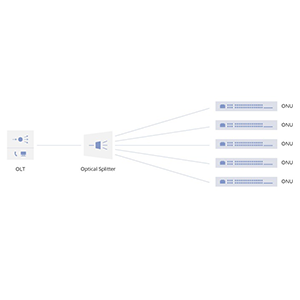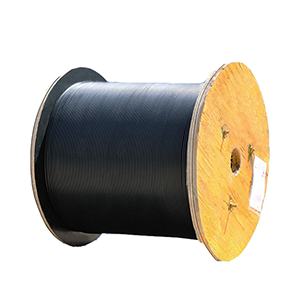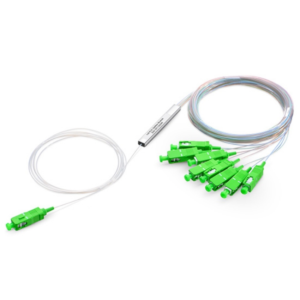Cisco Fabric Extender plays an important role in the network field. This article will explore the characteristics and applications of Cisco Fabric Extender. We first explain the basic concept of Fabric Extender and explain its main functions. Next, we will describe the interaction mechanism between Fabric Extender and Fabric switch and introduce its flexible deployment method.
Then, we will explain how Fabric Extender simplifies data center networks and analyze its advantages in virtualized environments. Finally, we will explain the software-defined network architecture of Cisco ACI and describe how Fabric Extender integrates and interconnects with ACI to achieve end-to-end network programmability and automation.
Overview of Cisco Fabric Extender
Cisco Fabric Extender (FEX) is a network device designed to extend the Cisco data center network architecture. It provides additional access ports to support more servers and storage devices by connecting to the core switch. FEX simplifies network management and reduces configuration complexity while achieving high-bandwidth and low-latency data transmission. Its flexibility and scalability make it suitable for virtualized environments and cloud computing platforms, optimizing the performance and efficiency of data centers.
1. Basic concepts of Fabric Extender:
Fabric Extender is an edge device in the Fabric network architecture, mainly used to connect traditional port devices to the Fabric network. It can be used as an extension of the Fabric network to provide standard Ethernet interfaces for terminal devices to achieve interconnection with the Fabric network.
2. Main functions of Cisco Fabric Extender:
Cisco Fabric Extender mainly plays the following functions in the Fabric network:
- Virtualized server ports:
- Cisco Fabric Extender can virtualize multiple physical ports on the server into a single logical port, simplifying the network connection of the server.
- Simplify network management:
- Cisco Fabric Extender takes over the management of terminal devices, greatly reducing the workload of network administrators.
- Support automatic configuration:
- Cisco Fabric Extender can automatically configure and manage with the Fabric control plane to improve deployment efficiency.
- Enhance network reliability:
- Cisco Fabric Extender supports multipath redundancy mechanism, which improves the availability and fault tolerance of the entire network.
In general, as the edge device of the Fabric network, Cisco Fabric Extender plays an important role in connecting terminals and simplifying management, which helps to build a more flexible and intelligent enterprise-level network infrastructure.
Key Features of Cisco Fabric Extender
Key features of Cisco Fabric Extender (FEX) include high scalability, low latency, and simplified network management. It supports multiple connection types and provides a rich range of access ports to meet large-scale deployment requirements. In addition, FEX can be seamlessly integrated with Cisco Nexus series switches, supports virtualization and dynamic load balancing, and improves data transmission efficiency. Its centralized management function reduces the complexity of operation and maintenance and ensures the stability and reliability of the network.
1. Interaction between Fabric Extender and Fabric Switch:
Cisco Fabric Extender interacts with the core switch of the Fabric network through a dedicated control channel to achieve centralized management and configuration:
- Fabric Extender receives various configuration and management instructions from the Fabric switch.
- Fabric switch is responsible for processing and forwarding the data traffic forwarded by Fabric Extender.
This close collaboration mechanism enables Fabric Extender to seamlessly integrate terminal devices into the Fabric network, simplifying the management of the network edge.
2. Flexible deployment of Fabric Extender:
Cisco Fabric Extender provides two common deployment methods:
- Installed on a rack server:
- Fabric Extender can be directly integrated into the server rack to provide network access for the server.
- Installed on a ToR (Top-of-Rack) switch:
- Fabric Extender can also be installed on a ToR switch at the top of the rack to provide connections for terminal devices in the rack.
This flexible deployment option enables Fabric Extender to better adapt to different network environments and needs. Whether it is a server or a ToR switch, Fabric Extender can play its role in simplifying management and improving reliability.
In general, Cisco Fabric Extender provides a highly integrated edge connection solution for enterprise-level Fabric networks through close collaboration with Fabric switches and flexible deployment methods.
Application of Cisco Fabric Extender in Data Centers
The application of Cisco Fabric Extender (FEX) in data centers is mainly reflected in supporting virtualization and cloud computing environments. It simplifies the network architecture by expanding the ports of the access layer to achieve efficient connection of multiple servers. In addition, FEX improves bandwidth utilization, reduces latency, and adapts to large-scale data transmission needs. Its centralized management function makes operation and maintenance more efficient, ensures the flexibility and reliability of the data center network, and is suitable for modern IT infrastructure.
1. How Fabric Extender simplifies data center networks:
- Reduce network layers:
- The traditional three-layer network architecture can be simplified to two layers through Fabric Extender.
- Fabric Extender sinks the terminal device access point to the rack or server layer, reducing the layer of network equipment.
- Reduce the number of devices:
- Fabric Extender can replace a large number of switch devices, reducing the number of network devices required in the data center.
- Fabric Extender can serve as an access point for terminal devices, reducing the demand for switches.
This simplification of network structure helps reduce the complexity and management costs of data center networks.
2. Advantages of Fabric Extender in virtualized environments:
- Improve the flexibility of virtual machine migration:
- Fabric Extender can virtualize multiple physical ports into a single logical port.
- This allows the network connection to remain unchanged when the virtual machine migrates between physical servers, greatly improving the flexibility of migration.
- Simplify virtual network management:
- Fabric Extender takes on the management responsibility of the virtual machine network interface.
- This reduces the complexity of network management in a virtualized environment.
In short, the application of Cisco Fabric Extender in data center networks can provide more flexible and efficient network solutions for enterprise IT infrastructure by simplifying network structure and optimizing virtual environment. This helps data center networks develop in a more intelligent and automated direction.
Fabric Extender and Cisco ACI work together
Fabric Extender works with Cisco ACI (Application Centric Infrastructure) to achieve network automation and flexible management. FEX supports dynamic resource allocation and load balancing in the ACI architecture by extending the access layer. It enables network policies in virtualized environments to be implemented quickly and optimize data flow. In addition, the integration of FEX and ACI enhances the visualization and monitoring capabilities of the network and improves the operational efficiency and reliability of the data center.
1. Cisco ACI’s software-defined network architecture:
Cisco ACI is an architecture based on software-defined networking (SDN), which programs and automates the management of the entire network through a centralized control plane. ACI abstracts the network infrastructure into logical policies, thereby achieving flexible orchestration and rapid deployment of the network.
2. Fabric Extender and ACI integration and interconnection:
Cisco Fabric Extender can be perfectly integrated with the ACI architecture to achieve end-to-end network programmability and automation:
- As the edge device in the ACI architecture, Fabric Extender is responsible for connecting terminal devices to the ACI Fabric network.
- Fabric Extender interacts with the ACI controller through the control channel and receives configuration and management instructions from the controller.
- This tight integration enables ACI to perform unified programmable control and automated management of the entire network topology.
3. Achieve end-to-end network automation:
Through the collaboration between Fabric Extender and ACI, the following network automation capabilities can be achieved:
- Automated configuration and deployment:
- The ACI controller can automatically send network policies to Fabric Extender for rapid deployment.
- Policy-driven network:
- ACI defines network policies based on application requirements, and Fabric Extender is responsible for policy execution.
- Dynamically orchestrate the network:
- When the application status changes, ACI can adjust the network configuration of Fabric Extender in real time.
In short, the deep integration of Cisco Fabric Extender and ACI architecture enables the entire network infrastructure to achieve end-to-end automated orchestration and intelligent scheduling, bringing higher agility and business value to enterprise IT.
Summary
Cisco Fabric Extender is a key technology for building a flexible and efficient network architecture. We are a Cisco certified gold partner, focusing on the research and development and application of network infrastructure solutions for a long time, and have rich practical experience. We provide a full range of Cisco Fabric Extender devices to meet the needs of different network scenarios.
Our products use Cisco’s leading technical solutions and have achieved excellent levels in forwarding performance, reliability and manageability. At the same time, our engineering team will provide you with professional demand analysis and solution design services to ensure that the deployed Fabric Extender solution can meet your actual needs to the greatest extent. Contact us now to learn more.
Cisco Fabric Extender FAQ
A Cisco Fabric Extender (FEX) is a device that extends the capabilities of a Cisco Nexus switch, enabling seamless connectivity and management of multiple devices within a data center.
It connects to a parent Nexus switch, allowing the FEX to function as an extension of that switch, facilitating easier management and data flow across the network.
Benefits include simplified network management, increased scalability, reduced cabling complexity, and improved overall performance.
They are commonly used in data centers to connect servers, storage devices, and network equipment, especially in large-scale environments.
Cisco FEX devices support Ethernet connections, with options for both copper and fiber cabling, depending on the model.
By allowing the addition of multiple devices without needing significant reconfiguration, they enable organizations to easily scale their network infrastructure.
Cisco FEX devices integrate with Cisco’s management tools, allowing for centralized configuration, monitoring, and troubleshooting.
Yes, they optimize data paths between devices, which can help lower latency and enhance overall application performance.
Yes, many models support redundancy to ensure high availability and reliability in the network.
They are designed to integrate seamlessly with Cisco Nexus switches, allowing for a unified management experience and straightforward deployment in existing infrastructures.




